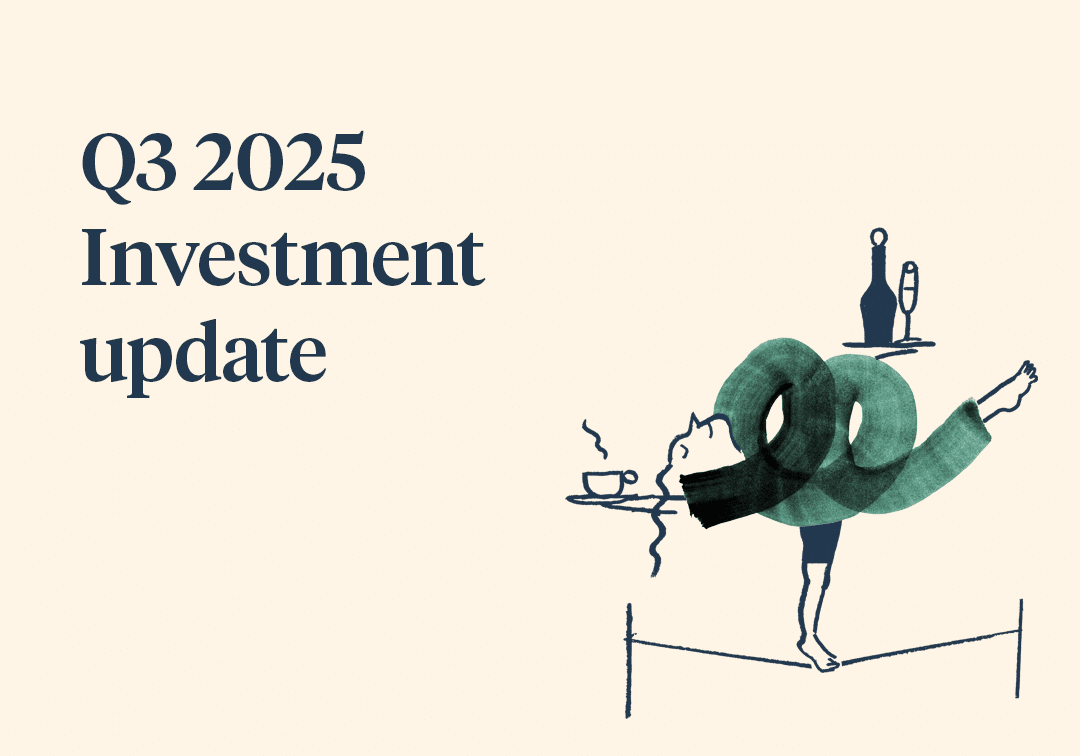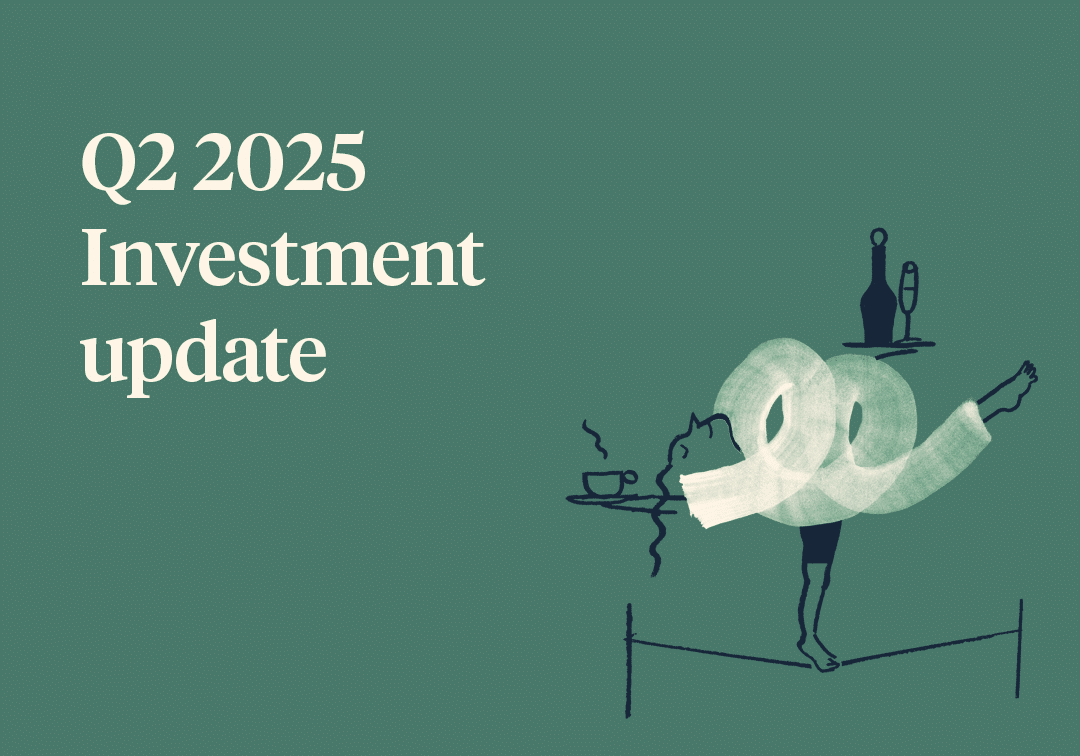Transcript
Tom Merchant:
Welcome everyone to our Q4 investment update. My name’s Tom Merchant, I’m one of the business development managers for Saltus. And I’m pleased to be joined again by Mike Stimpson, a partner of our investment team. Hi, Mike.
Michael Stimpson:
Hi, guys.
Tom Merchant:
Hi. So just to kick us off really, it’s fair to say Q4 specifically were quite high-impact months. So maybe just to kick us off, it’d be great if you could just give us a high-level update just on what went on?
Michael Stimpson:
Sure. So, I think we’ve got to think about the fourth quarter as a game of two halves. In the first half, we were dealing with hawkish central banks and inflation data that was pretty unclear. Well, we didn’t have a clear direction. And then the second half, from early November we had unambiguously good US CPI numbers. The October number was clearly down and that meant markets accepted that we were now past peak inflation and therefore would be past peak interest rates too.
And then, in December, the Federal Reserve came out unexpectedly dovish for the first time and added fuel to that recovery fire, and markets continued to power forward into the new year. So overall, in the second half of the quarter, we had a very powerful two-month rally which recovered previous losses and pushed us slightly higher for the year.
Tom Merchant:
Brilliant. Now, I appreciate we have a very educated client base, but could we potentially just cover off quickly what the difference between hawkish and dovish is? Just making sure that we’re not talking to a few keen birdwatchers.
Michael Stimpson:
Sure, sure. So hawkish is when, if the central bank is hawkish, it means that it’s conservative. It’s more worried about inflation than growth. And so, a hawkish central bank would be looking to raise interest rates whereas a dovish central bank is saying the next move’s likely to be down. And so that was a real shift in US central bank sentiment in December, where previously all the rhetoric had been, ‘We’re not sure inflations finished. Inflation’s still the number one concern, interest rates could go higher.’ In December they were saying, ‘Yep, for now, it looks like it we’re done and markets can relax.’ And they very much took on that message.
Tom Merchant:
Brilliant. And I suppose what most people on this call typically want to know is, what has that meant for us and our portfolios? So, would you maybe touch on what this sort of dovishness and rebound in the markets has meant for us?
Michael Stimpson:
Sure. So, I mean big picture, it means that things have turned for the better. And we through the fourth quarter have been increasing risk in portfolios. We’ve particularly put money to work in credit, in investment grade credit. These are investments like bonds from companies like Microsoft or Coca-Cola, big well-known companies. These kinds of investments tend to do well at the peak of an interest rate cycle because you get the coupon, so you get your interest payments, but also the potential for some capital appreciation as investors come out of cash and start to seek higher returns.
And so, we look at these investments where you can expect a total return of perhaps just under 10% over 18 months with reasonably limited downside, which feels like a pretty attractive investment to make right now. We haven’t gone full pedal to the metal, as it were. We don’t want to be too risk-on because the reality is we’ve only had two months of good data and there’s still a recession risk out there. So today, we sit about 10% below our risk budgets in portfolios, having been as much as 15% or 20% below them through most of 2023.
Tom Merchant:
Okay. So, keeping a little bit of powder dry, just looking for some possible opportunities heading forward.
Michael Stimpson:
That’s right. And I think we’ve seen markets come off a touch in January. And as things are falling, we very much see that as opportunities to buy today rather than a threat. So, we’re looking to put more money to work when appropriate.
Tom Merchant:
Perfect. And I suppose that brings us nicely to say what is the outlook? What are we forward-looking? What are we seeing? What are we thinking? You mentioned there’s been a little bit of a sell-off in January, are we using this as a buying opportunity?
Michael Stimpson:
Yeah, that’s right. I mean, broadly we feel more positive than we have done. Again, because we believe, and markets believe that we are through the peak of inflation. However, we’re not out of the woods yet. There’s quite a lot still to get through. We’ve got harder relative comparisons to come. So, both profit numbers from companies and inflation numbers, we’ll shortly be comparing falling inflation with falling inflation.
There’s lots of geopolitical news to come this year. Seven of the ten most populated countries in the world are voting this year. Those populations aren’t in the mood to hear about austerity or spending cuts, but governments have a very real debt issue. So, there’s a friction there, which leads to, dare I say, the potential for another Liz Truss-type moment. So, there’s stuff to get through.
The most important thing is going to be the US election, as we’d expect, the possibility of Donald Trump returning. Again, as we get towards the summer, there’s going to be a huge amount of noise about this. At the moment, the protectionist policies and the protectionist rhetoric that’s coming out, that’s not positive for global growth, although historically markets have always thought Republican presidents would be good for growth. So, we’re going to have to watch that quite carefully.
There’s also the potential for sticky inflation numbers to still be a bit unsettling. While we do think we’re past peak inflation getting all the way down to 2%, we’ve still got a little bit of work to do. But there are always things to be nervous about. There are always reasons to be cautious. And overall, we very much feel it’s the glass half full and looking for opportunities to put money to work in risk assets.
Tom Merchant:
Perfect. So, I mean, to summarise, it sounds that we are optimistic, but typically cautiously so. And I suppose, are there any other closing comments you think are worth adding? I appreciate last year was a bumpy year, but it was nice to finish very strong for clients and portfolios, is there anything you’d like to add to finish off?
Michael Stimpson:
Yeah, I think cautiously optimistic is probably a good way to sum it up. I think we feel positive that we can produce better positive returns this year than last, albeit we had a very strong end of the year. But we’re going to have to stay nimble. We’re going to continue to react. But broadly, we’re feeling glass half full.
Tom Merchant:
Brilliant. Perfect. Well, any other closing thoughts or otherwise we’ll catch everyone up for an end of Q1 update in a few months. So, any questions or if you’d like to discuss any of this further, please do reach out to your adviser or contact me and I’ll be delighted to speak further. Thanks, bye bye.
Michael Stimpson:
Thanks so much.


